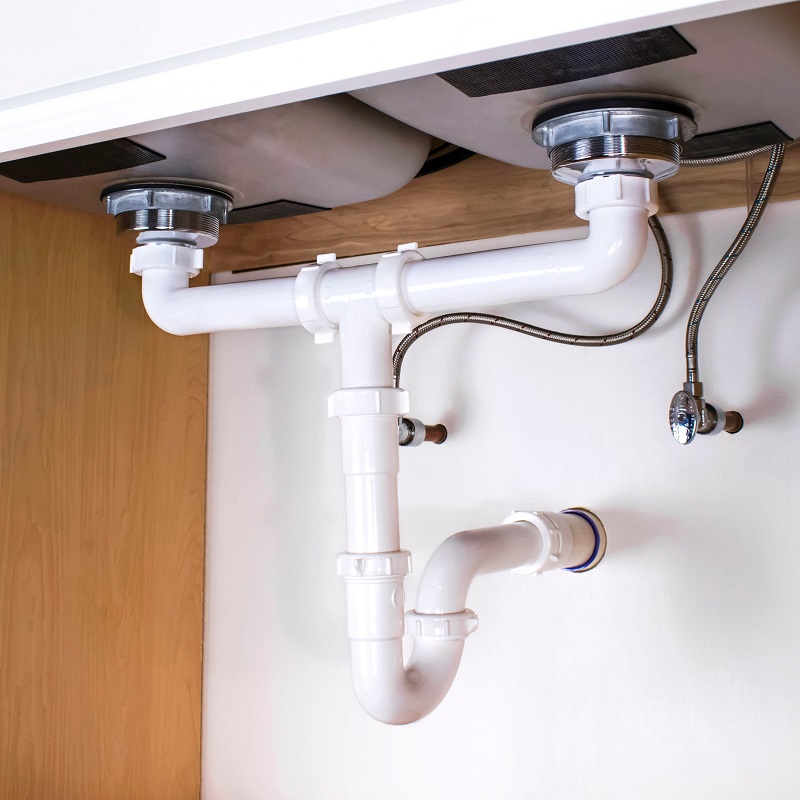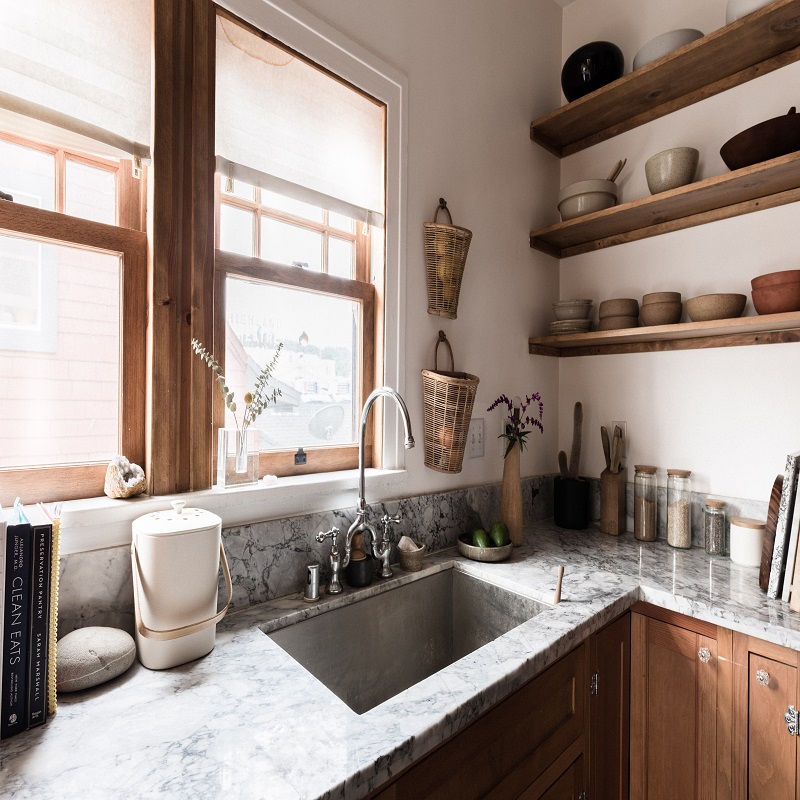How to clean kitchen sink drain pipe? Cleaning your kitchen sink drain pipe is an essential task to maintain hygiene and prevent clogs that can lead to slow drainage or even backups. Over time, food debris, grease, soap residue, and other substances accumulate inside the pipes, creating an unpleasant odor and potentially causing blockages. Regular maintenance not only keeps your kitchen fresh but also extends the lifespan of your plumbing system. Here’s a step-by-step guide on how to effectively clean your kitchen sink drain pipe.
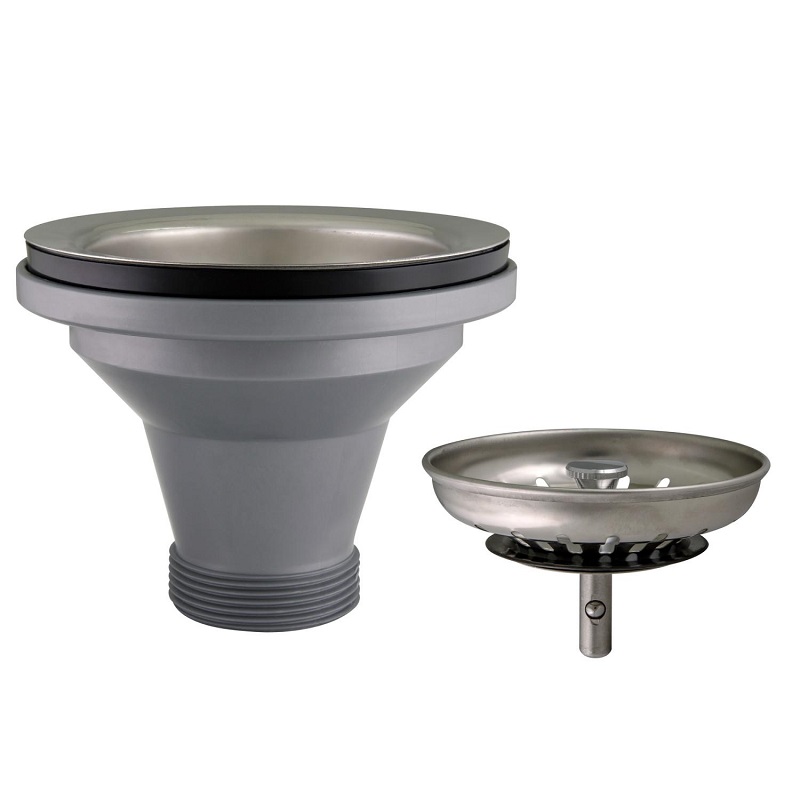
Gather Your Supplies
Before you begin, gather all the necessary tools and cleaning agents. You will need:
- Rubber gloves for protection
- A bucket to catch water or debris
- A plunger
- A plumber’s wrench or adjustable wrench
- An old toothbrush or a small brush for scrubbing
- Baking soda
- White vinegar
- Hot water
- A drain snake or zip-it tool (optional)
- Commercial drain cleaner (optional, but recommended as a last resort)
Remove Debris from the Sink Drain
Start by removing any visible debris from the sink drain. Use a flashlight to inspect the drain opening and remove any loose food particles or other foreign objects with your hands or a pair of tweezers.
Unclog with a Plunger
Place the cup of the plunger over the drain opening, ensuring there is enough water in the sink to cover the plunger head. Pump the plunger up and down vigorously for several minutes, creating suction that can dislodge minor clogs. If you have a double sink, block the unclogged drain with a wet cloth to maximize pressure.
Remove and Clean the P-Trap
The P-trap is the curved section of pipe beneath your sink that traps debris and prevents sewer gases from entering your home. Place a bucket beneath the P-trap to catch any water or debris that may spill out.
- Loosen the slip nuts connecting the P-trap to the sink tailpiece and the wall pipe with a wrench. Turn them counterclockwise by hand first, then use the wrench if needed.
- Separate the P-trap and empty its contents into the bucket. Inspect the trap for any clogs and clean it thoroughly using hot water and a brush. Reassemble the P-trap, tightening the nuts securely but not overtightening to avoid damaging the threads.
Use Baking Soda and Vinegar
Pour about half a cup of baking soda followed by an equal amount of white vinegar down the drain. The mixture will foam and bubble, which helps break down grease and grime. Let it sit for at least an hour or overnight for tougher clogs.
Flush with Hot Water
After the baking soda and vinegar have done their work, flush the drain with hot water from the tap for several minutes. The hot water helps dissolve any remaining debris and flush it through the pipes.
Address Stubborn Clogs
If the above steps haven’t resolved the issue, consider using a drain snake or zip-it tool. Insert the tool into the drain and twist it as you push it further down the pipe to dislodge any stubborn clogs.
As a last resort, you can use a commercial drain cleaner following the product instructions carefully. However, be cautious as these chemicals can be harsh and damaging to pipes and the environment.
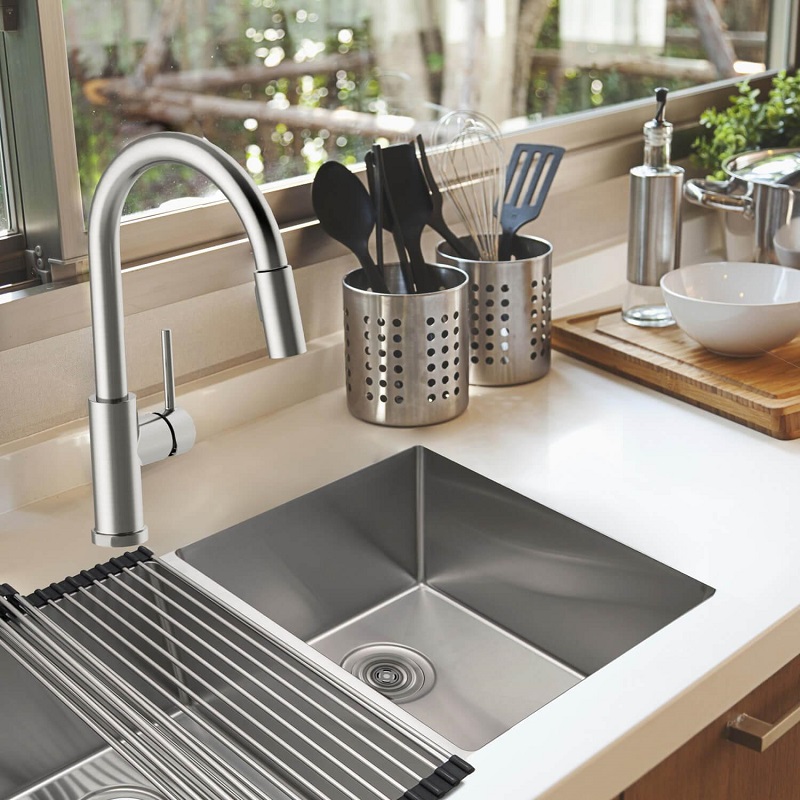
Regular Maintenance
To prevent future clogs, adopt good habits like scraping plates clean before washing, using drain screens to catch debris, and pouring boiling water down the drain once a week to clear any buildup.
What are the styles of kitchen sinks?
Kitchen sinks serve as the focal point of culinary activities, combining functionality with aesthetic appeal. With advancements in design and materials, there’s a vast array of sink styles available to suit every kitchen sink, design preference, and usage requirements.
1. Undermount Sinks
Undermount sinks are installed beneath the countertop, creating a seamless transition between the sink and the countertop surface. This design not only enhances the kitchen’s modern and sleek look but also simplifies cleaning since crumbs and spills can be wiped directly into the sink without obstruction. Made primarily from stainless steel, granite composite, or ceramic, undermount sinks are ideal for countertops made of solid surface materials like granite or quartz.
2. Topmount (Drop-In) Sinks
Topmount, or drop-in sinks, are fitted into a pre-cut hole in the countertop with a rim resting on the countertop surface. This classic style is easier and more cost-effective to install compared to undermount sinks. Available in a wide range of materials, including stainless steel, enameled cast iron, and acrylic, topmount sinks are versatile and compatible with almost any countertop material.
3. Farmhouse (Apron-Front) Sinks
Farmhouse sinks, also known as apron-front sinks, feature a distinctive front panel that protrudes slightly beyond the countertop edge, adding a charming, rustic touch to modern and traditional kitchens alike. Historically made of fireclay or porcelain, today’s farmhouse sinks also come in stainless steel, copper, and granite composite. They are deep and spacious, ideal for large pots and pans, and their installation often requires modifying the cabinetry.
4. Single Bowl vs. Double Bowl Sinks
Single bowl sinks offer a continuous, open space that’s particularly useful for washing large cookware or accommodating bulky items. They are a popular choice for compact kitchens or for those who prefer simplicity in design.
Double bowl sinks, on the other hand, feature two separate compartments, allowing for multitasking such as washing dishes in one side while preparing vegetables in the other. They come in various configurations, including equal-sized bowls or one larger and one smaller bowl, catering to different kitchen needs and workflows.
5. Integrated Sinks
Integrated sinks are fabricated from the same material as the countertop, creating a unified, continuous surface without any seams. Typically seen in solid surface materials like Corian or granite, integrated sinks provide an ultra-modern, minimalist look and are easy to clean. However, they are usually custom-made and can be more expensive.
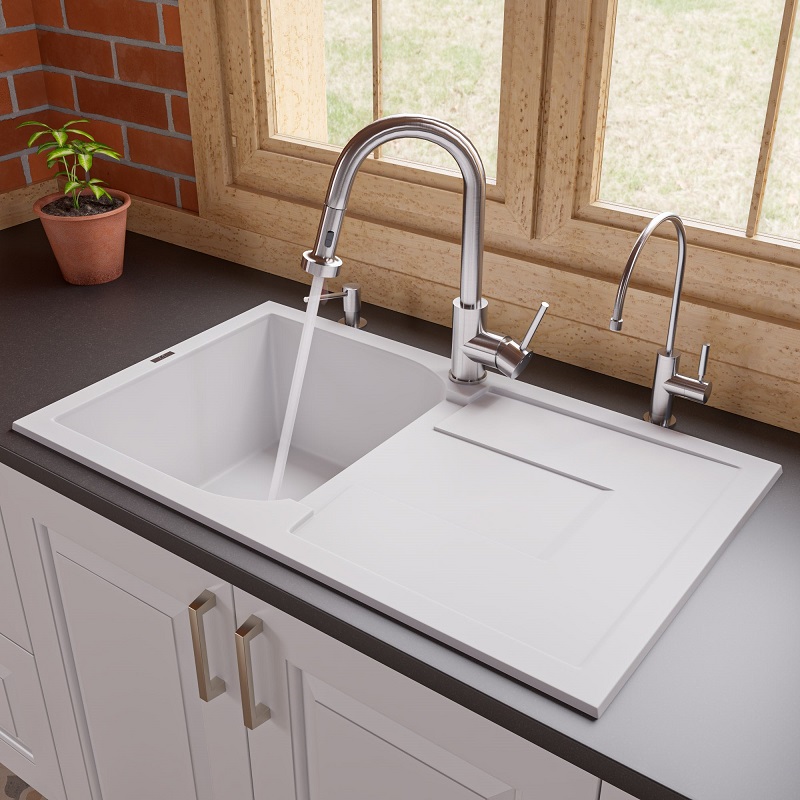
6. Bar/Prep Sinks
Bar or prep sinks are smaller in size, designed for secondary use in a kitchen island or bar area. Perfect for rinsing fruits, preparing drinks, or washing small dishes, they can be undermount, topmount, or even in a unique shape like a round or square basin. Materials vary widely, from stainless steel to copper or stone.
7. Corner Sinks
For kitchens with limited space or unconventional layouts, corner sinks make efficient use of the corner area. These sinks are designed to fit snugly into a 90-degree angle, maximizing counter space and promoting better traffic flow in the shiplap kitchen island.
8. Trough Sinks
- Trough sinks, inspired by farm troughs, are long, narrow basins that can either be single or double in configuration. They are ideal for busy kitchens that require ample space for washing and soaking, and their linear design adds a contemporary edge to the kitchen.
- Selecting the right kitchen sink involves balancing practicality, aesthetics, and personal taste. Whether you’re drawn to the sleek lines of an undermount sink, the rustic charm of a farmhouse sink, or the efficiency of a double-bowl configuration, each style offers unique benefits to enhance your kitchen experience.
Conclusion
How to clean kitchen sink drain pipe? Cleaning your kitchen sink drain pipe regularly is a simple yet crucial task that promotes hygiene and prevents plumbing issues. By following this comprehensive guide, you can effectively maintain your sink’s drainage system, ensuring it remains free-flowing and odor-free. Remember, prevention is key, so adopting proactive cleaning measures and being mindful of what goes down your drain can save you from costly repairs in the long run. A clean and well-maintained kitchen sink is not just a practical necessity but also contributes to a healthier and more pleasant living environment.
